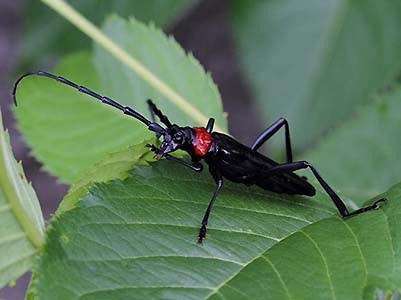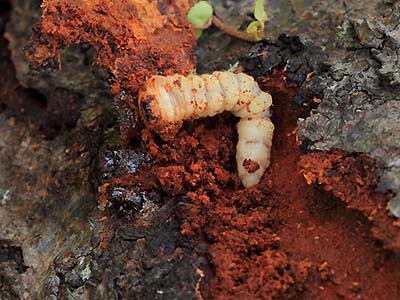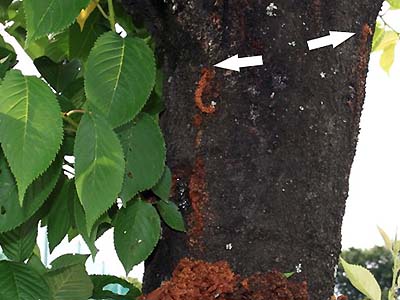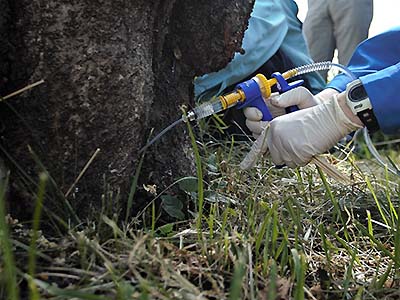Home > Research > Research Results > Research Results 2020 > Protecting cherry blossom trees by injection
Main content starts here.
Protecting cherry blossom trees by injection: Confirming the efficacy of inoculating tree trunks against the invasive red-necked longhorn beetle Aromia bungii
| Article title |
Efficacy of insecticide trunk injection against larvae of invasive red-necked longhorn beetle Aromia bungii in cherry blossom trees |
||||
|---|---|---|---|---|---|
| Author (affiliation) |
Eiriki Sunamura (a), Shigeaki Tamura (a), Etsuko Shoda-Kagaya (a) (a) Department of Forest Entomology, FFPRI, Tsukuba, Ibaraki, Japan. |
||||
| Publication Journal |
Japanese Journal of Environmental Entomology and Zoology, 31(1), 13-19. The Japanese Society of Environmental Entomology and Zoology April 2020 |
||||
| Content introduction |
In recent years, the withering of such trees as Japanese plum, peach, and cherry blossom trees has become a problem. The perpetrator is the invasive longhorn beetle Aromia bungii. The larvae of this beetle bore tunnels into trees, where they devour the interior wood, causing the trees to wither. As the prevention of such damage calls for urgent action, we have been examining injecting tree trunks. Injecting an insecticide into a tree trunk causes it to be transported throughout the entire tree through the tree's xylem sap. One of the advantages of this method is that the treatment can be carried out without dispersing the insecticide in the air. In the present study, we inoculated 5 Somei-Yoshino cherry trees (Cerasus × yedoensis ‘Somei-yoshino’ ) that had been infested by A. bungii with a commercial insecticide formulation which had been newly registered for use against A. bungii in cherry trees (active ingredient: dinotefuran) in order to verify its efficacy. Because this beetle ejects much sawdust and frass from its tunnels, the ejection of frass is a sign of the life or death of the larvae. Continuous observations made for 6 months after inoculation confirmed that the ejection of frass had stopped within 2 weeks after inoculation in 72% of the holes, as compared to pre-inoculation. It was determined that those larvae had died due to the efficacy of the insecticide. However, there was no effect in the remaining 28% of holes. In the vicinity of those holes, lessening of tree vigor and/or multiple perforations were observed, so it is thought that the insecticide did not reach those areas due to poor transport of the sap. In such cases, it is necessary to remove the larvae by cutting the infested branch or other means. The insecticide injected into the tree trunks reaches the leaves, so it has been used against foliar-feeding insects and sap-sucking insects. The present study provides a valuable example that insecticide trunk injection is also effective against wood-boring insects.
|
Copyright © Forest Research and Management Organization. All rights reserved.




